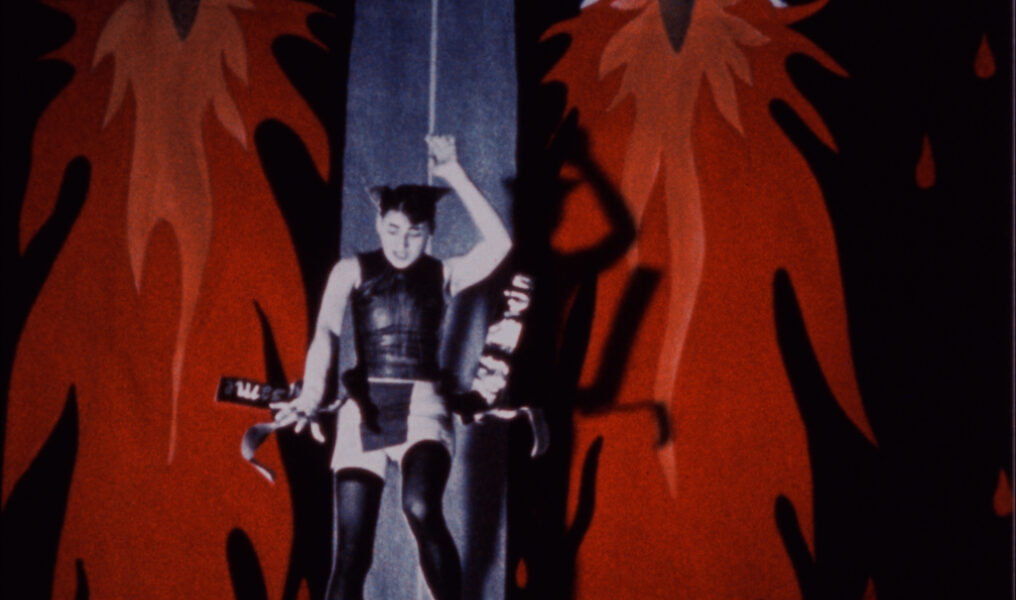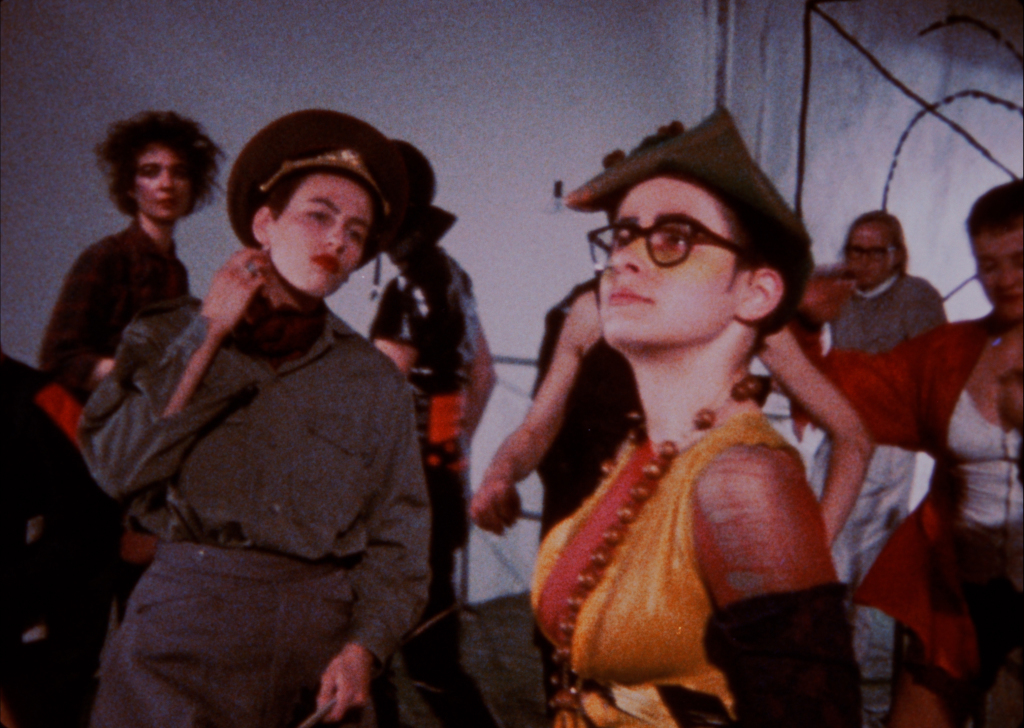An Erotic Film Series in Michigan Has Revived This Vigorously Directed Punkish Lesbian Sci-Fi Flick
1992’s ‘Flaming Ears’ is a futuristic, dystopian romp in pleather

In the second week of 2023, “Skinamarink,” a shoestring-budget independent horror work shot in Edmonton, Alberta, opened to wide release and found an American audience. Directed and written by queer filmmaker Kyle Edward Ball, the film’s domestic horror/found-footage trappings may be familiar, but to most, its textures will feel alien and oppositional.
By overwhelming its frames with a blizzard of near-blinding digitized grain, the film forces viewers to fumble through its textures to visually locate characters, objects and, ultimately, its story. This sense of friction, through which the film resists easy comprehension, proves more than an unconventional experience — it’s very much the point.
More queer work — stuff made scrappily and on the margins of society — used to look like this, embracing jagged textures in a manner owing to some mixture of necessity and taste. Thankfully, some portion of that history’s been preserved and maintained, allowing for renewed or belated encounters with a broader audience.
Such is the case with 1992’s “Flaming Ears,” a queer German-language dystopian film set in A.D. 2700. The movie will play Hamtramck’s Outer Limits Lounge Feb. 16 as part of Cinema Lamont’s Skin City erotic film series.
Punkish, imaginative and rough-hewn, the film presents its lesbian-dominated world without the forms of gloss it can’t afford. Vigorously directed by (and featuring starring performances from) A. Hans Scheirl, Dietmar Schipek and Ursula Puerrer, the film assails its viewers with forms and textures as angular and expressive as those in "Skinamarink."
Shot on 8mm film and then blown up to a larger format, the low-lit look and rough surfaces of "Ears" makes for an urban world that feels depopulated and dangerous; here, queer characters embrace precarity as a fact of life.
Elements of the premise and sentiment seem liberating — as much for the artists involved as for the characters in play. Prizing an oppositional sensibility and taste for blunt lyricism throughout, its textures are always and often eerily personalized, bearing the handmade markers of the underground. With models, cut-outs and animation effects interspersing the film’s live-action, "Ears" heightens the sense of its fictional city, Asche, as an alternate, deliberately constructed world. Hailing from a time in which queerness reliably meant being outside — and even against — the dominant currents of society, the film also plays as a kind of fantasia in which queerness remains the prevailing force behind the look and feel of its world.
While its plot mechanics could be easier to track, the film centers on three characters (each played by one director) named Spy, Volley and Nun. Respectively a comic artist, an irrepressible pyromaniac and a humanoid alien clad in a pleather jumpsuit, the film’s underdogs come together together in a loose collaboration that never feels quite settled. The film’s narrative is less the draw than its style and riot of textures — or its characters’ rich sense of solidaristic intimacy, which never seems to merit or require explaining. Even when its vibrant characters clash with one another, they still seem to be connected by some underlying bond.

While many films depict lesbian women as aestheticized and ornamental, making for a non-threatening presentation that seems to keep desirous male viewers in mind, “Flaming Ears” makes little space for such tendencies. Populated with characters who exist for themselves over anyone who might be watching — and to some degree for each other — there’s no sense that the film’s women are catering to anything but their own creative impulses in their presentation. Pleather jumpsuits, bowlcuts and bluntly drawn eyebrows, along with a mishmash of vintage and handmade fashion signifiers, color the film’s characters as distinct from one another and, beyond the film’s period setting, the mainstream of the film’s own time.
The film’s kink-friendly treatment of sex and intimacy, too, proves likewise unrestrained, embracing the same sort of blunt self-presentation that characterizes the film more broadly. At home with a certain grubbiness too rarely captured in screen depictions of sex (Jane Campion’s 2003 film “In the Cut” gets it, too), the film’s erotic scenes seem as naturally suited to its characters as its actual duct-taped set dressing.
For the film’s trio of directors, even when engaged together in a low-budget feat of speculative fiction, it’s their (or perhaps their characters’) personalities and predilections which seem to come to the fore. Far from being lost in the machinery of science fiction’s overtrumpeted “world-building” imperatives, all that’s done here stems from the filmmakers’ tastes and personality above all else, with their confrontational approach to dystopia bending to a theatrical sensibility that at moments evokes the dislocating period films of Derek Jarman.
Even given the chance to construct a frictionless alternate reality, though — always an opportunity in science fiction — it’s notable that the film’s directors refuse to imagine the characters’ queerness as anything but oppositional. Treating its characters as outsiders even as they make up the film’s main cast, this framing suggests that queerness without a sense of resistance isn’t just missing something — it’s unimaginable.
While “Flaming Ears” presents a dystopia, a world one ostensibly wouldn’t want to live in (even as we basically all do), it’s a fantasy space, too, of loud, brash, and deeply personalized expressions arising from the atmosphere of the film’s vast-seeming queer underground. It’s an imaginative zone improbably realized in the film’s making, too: not through the possibilities for acceptance or assimilation that have arisen in the time since its release, as some might guess, but through the fact a film this angular, personal and defiantly strange not only exists, but endures.
The Skin City film series runs through Feb. 23 at Cinema Lamont in Hamtramck. Visit cinemalamont.com for more information.









